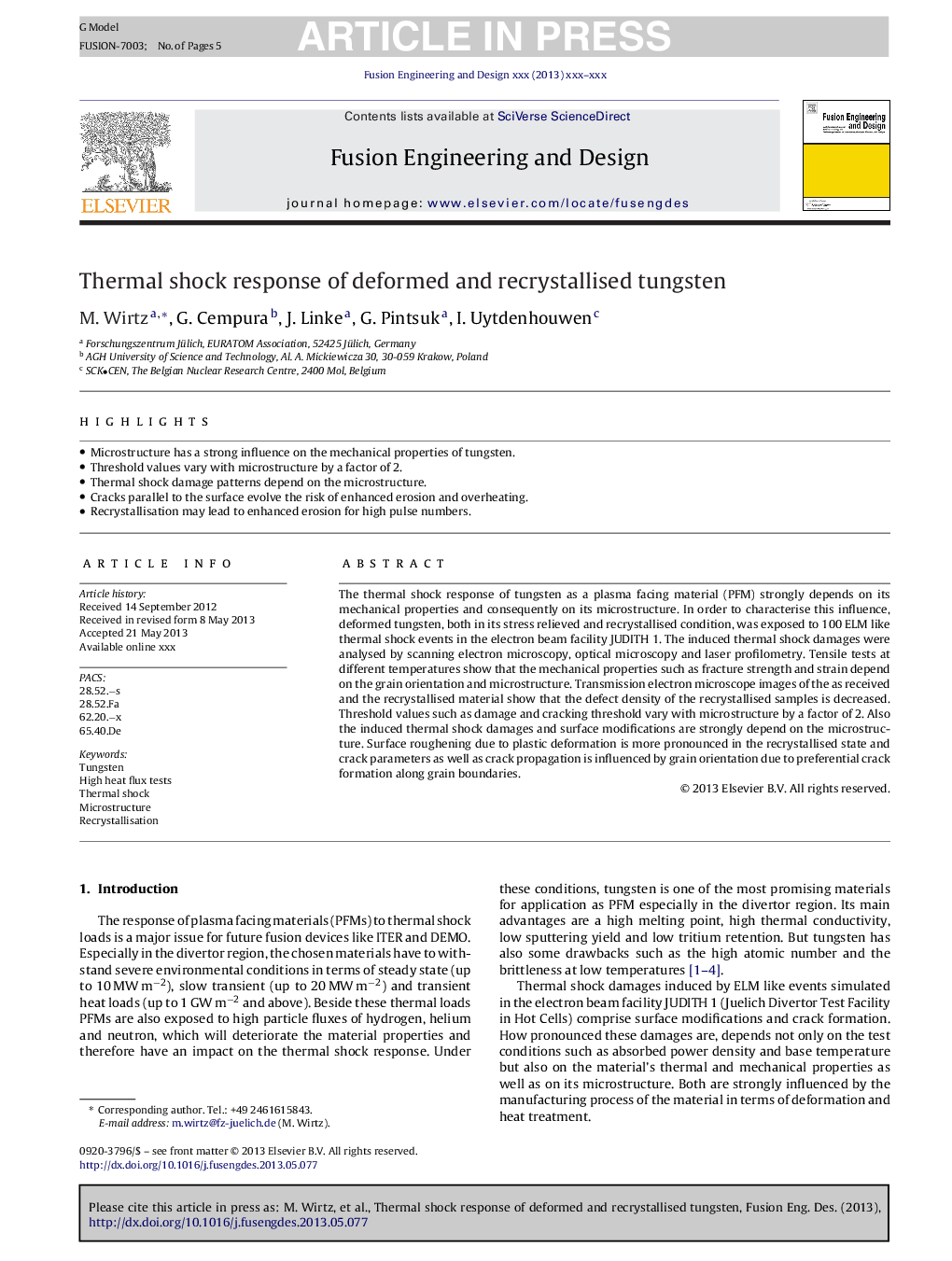| Article ID | Journal | Published Year | Pages | File Type |
|---|---|---|---|---|
| 6746420 | Fusion Engineering and Design | 2013 | 5 Pages |
Abstract
The thermal shock response of tungsten as a plasma facing material (PFM) strongly depends on its mechanical properties and consequently on its microstructure. In order to characterise this influence, deformed tungsten, both in its stress relieved and recrystallised condition, was exposed to 100 ELM like thermal shock events in the electron beam facility JUDITH 1. The induced thermal shock damages were analysed by scanning electron microscopy, optical microscopy and laser profilometry. Tensile tests at different temperatures show that the mechanical properties such as fracture strength and strain depend on the grain orientation and microstructure. Transmission electron microscope images of the as received and the recrystallised material show that the defect density of the recrystallised samples is decreased. Threshold values such as damage and cracking threshold vary with microstructure by a factor of 2. Also the induced thermal shock damages and surface modifications are strongly depend on the microstructure. Surface roughening due to plastic deformation is more pronounced in the recrystallised state and crack parameters as well as crack propagation is influenced by grain orientation due to preferential crack formation along grain boundaries.
Keywords
Related Topics
Physical Sciences and Engineering
Energy
Energy Engineering and Power Technology
Authors
M. Wirtz, G. Cempura, J. Linke, G. Pintsuk, I. Uytdenhouwen,
